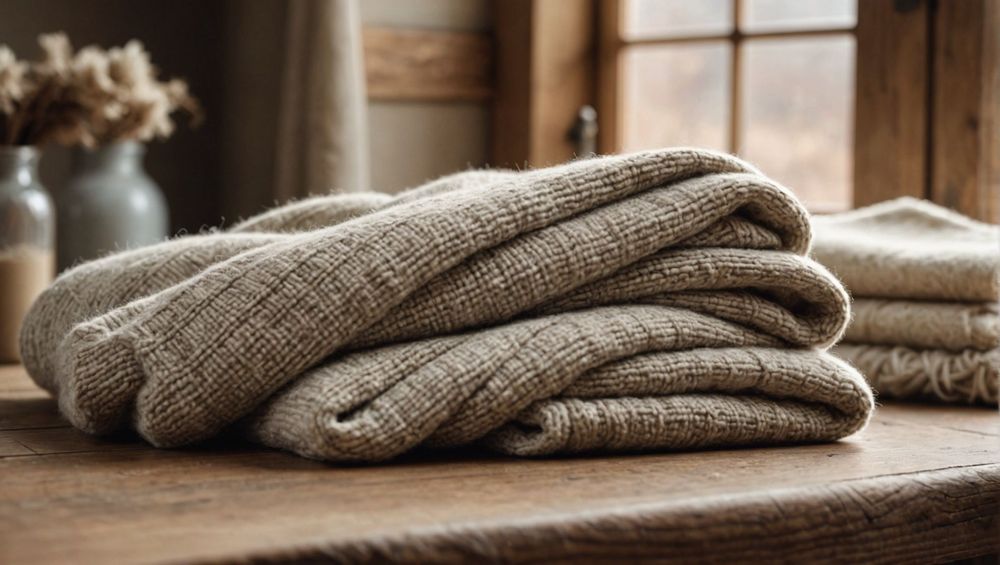Cashmere is a luxurious fiber obtained from the soft undercoat of cashmere goats, primarily found in the high plateaus of Mongolia, China, and Tibet. Renowned for its unparalleled softness, warmth, and lightweight characteristics, cashmere has become a symbol of opulence in the fashion industry. This article will delve into the reasons behind the extravagant cost of cashmere, exploring its unique properties, production process, and factors that contribute to its high price tag.
The Unique Properties of Cashmere

Cashmere is celebrated not only for its softness but also for its other outstanding properties that make it a coveted material for clothing and accessories. Here are several key attributes that contribute to the desirability of cashmere:
- Incredibly Soft: Cashmere fibers are finer than human hair, resulting in a soft, smooth texture that is gentle on the skin.
- Exceptional Warmth: Despite being lightweight, cashmere provides excellent insulation, keeping wearers warm in colder climates.
- Durability: With proper care, cashmere garments can last for years, making them a worthwhile investment.
- Breathability: Cashmere is a breathable fiber, allowing moisture to escape, which helps regulate body temperature.
- Versatility: Cashmere can be woven and knitted into a variety of styles, making it suitable for diverse clothing items.
The Production Process of Cashmere

The journey of cashmere from goat to garment is labor-intensive and requires a careful process to maintain the quality of the fibers. Here is how cashmere is produced:
- Shearing: Cashmere is harvested during the molting season when goats naturally shed their undercoat. This usually occurs once a year.
- Sorting: After shearing, the fibers are meticulously sorted by hand to separate high-quality cashmere from coarse fibers and debris.
- Washing: The sorted fibers undergo washing to remove any impurities and oils, preparing them for spinning.
- Spinning: The cleaned fibers are then spun into yarn, which can be further processed into various textiles.
- Weaving or Knitting: Finally, the yarn is woven or knitted into finished products, including sweaters, scarves, and blankets.
Factors Contributing to the High Price of Cashmere
Cashmere’s premium price tag is not just about the material itself; several factors influence its cost in the marketplace. Here are the main reasons:
- Scarcity: The unique climate and geography required to raise cashmere goats limit their population, leading to a scarcity of high-quality cashmere.
- Labor-Intensive Production: The meticulous process of harvesting, sorting, and processing cashmere demands a significant amount of labor, raising the overall production costs.
- Quality Standards: Only a small percentage of cashmere fibers meet the highest quality standards, which further drives up the price of premium products.
- Market Demand: As demand for luxury clothing continues to rise, cashmere has become increasingly sought after, influencing its price.
- Branding and Craftsmanship: Many high-end brands incorporate cashmere into their collections, increasing the perceived value through branding and craftsmanship.
Conclusion
In summary, cashmere is a luxurious and highly desirable material celebrated for its unique properties including softness, warmth, and durability. The labor-intensive production process, combined with factors such as scarcity and high market demand, contributes to its exorbitant price. When investing in cashmere, consumers not only acquire a beautiful garment but also a piece of craftsmanship steeped in quality and tradition.
FAQs
1. What makes cashmere different from regular wool?
Cashmere is softer, lighter, and warmer than regular wool. It is sourced from cashmere goats, which produce finer and softer fibers compared to sheep’s wool.
2. How should I care for cashmere garments?
Cashmere should be hand-washed with cold water and a gentle detergent, avoiding wringing or twisting. Always lay flat to dry to maintain its shape and softness.
3. Is cashmere warm enough for cold weather?
Yes, cashmere provides excellent insulation and warmth despite being lightweight, making it ideal for cold weather attire.
4. Why are some cashmere products cheaper than others?
Price differences can be attributed to the quality of the fibers, the craftsmanship involved, and the brand’s reputation. Lower-cost cashmere may contain blends or lower-quality fibers.
5. Can cashmere be worn by people with sensitive skin?
Most people find cashmere to be soft and comfortable against the skin. However, some may have sensitivities, so it’s best to try a small item before making a larger purchase.